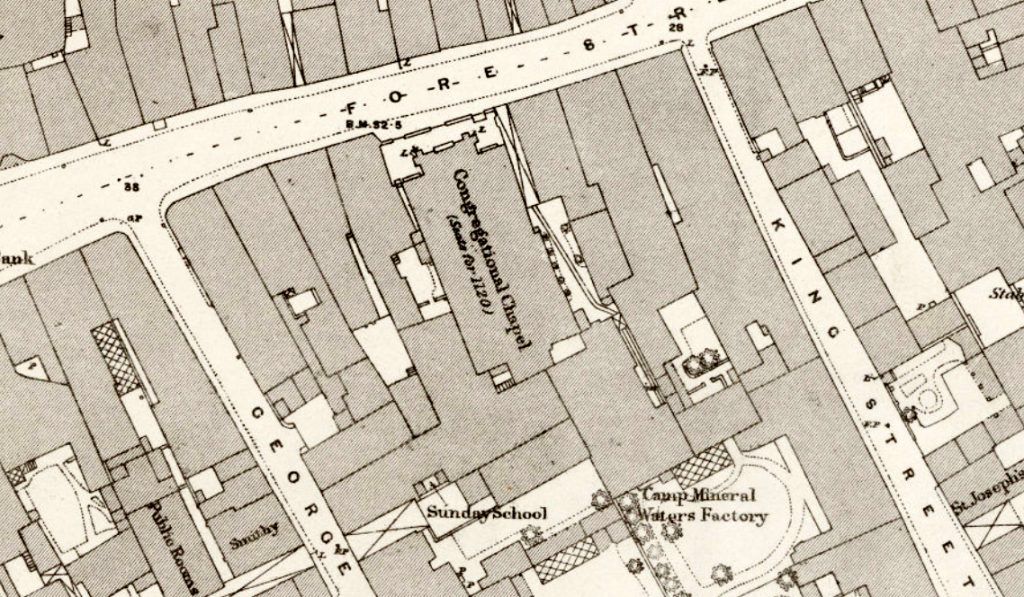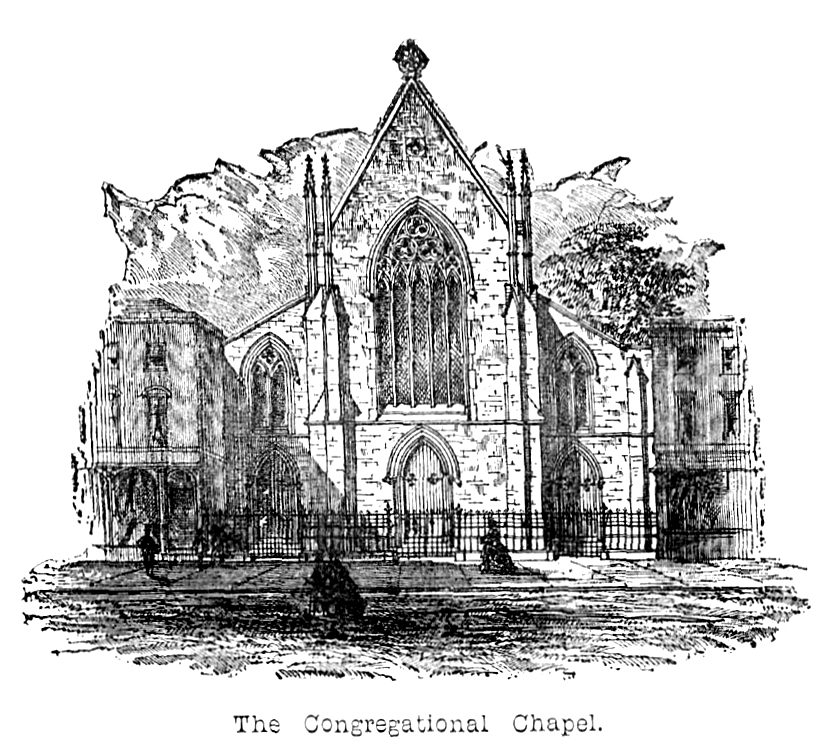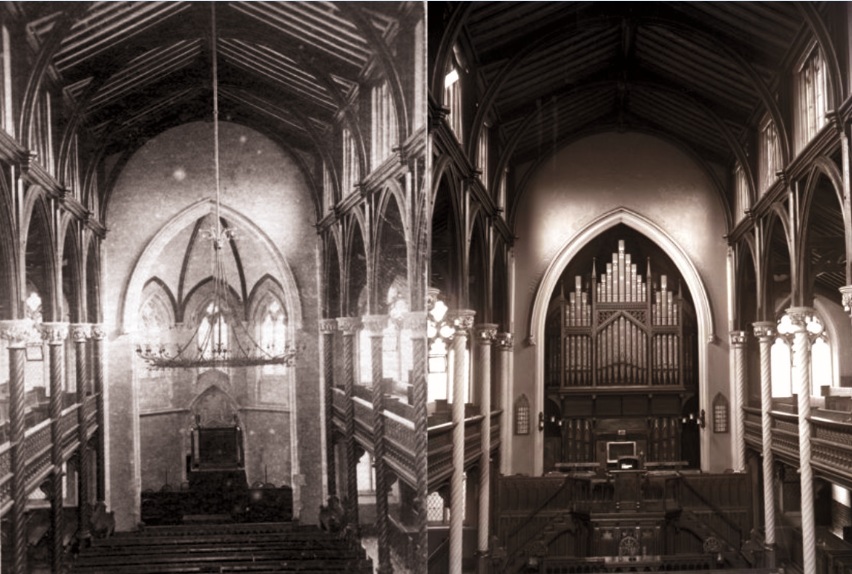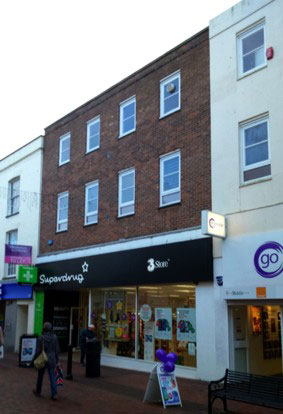
The Fore Street Congregational Chapel was completed in 1864, having been designed by Bridgwater architect Edwin Down in July 1862. The Congregationalist community of Bridgwater had moved from the old Sion Chapel in Friarn Street, which had become too small for their needs. This old site was eventually taken over as the Salvation Army Citadel.
Edwin Down had also designed the Baptist Chapel in St. Mary Street, which evoked classical antiquity, but this new dissenters’ chapel was executed in the Decorated Gothic Style, a style of medieval architecture. It was constructed in blue-grey lias limestone from the Polden Hills and it could seat up to 900 worshippers. Despite the confines of the site Down managed to utilise the limited space to create a beautifully lofty building with an inspiring vertical emphasis.
The foundation stone was laid on 25 August 1862, by Samuel Morley, a woollen manufacturer, philanthropist, abolitionist, political radical, and statesman. The organisation of the fund raising for the new building, along with a fair proportion of the actual money, was supplied by George Bryant Sully, a prosperous Bridgwater merchant and sometime Mayor of the town. Reordering took place in 1874 when a large organ was installed, along with an imposing raised pulpit. To the back of the chapel a new lecture theatre and an attached school room were added in 1877, which extended from the chapel all the way to George Street. The chapel was demolished in 1966 when a new chapel, now the United Reform Church, was built in Westfield. It was briefly a shop before demolition began. Jarman described how ‘It presents a striking appearance in the midst of business premises in one of the busiest streets of the town; whilst internally everything has been done to please the eye and not offend taste’.


©digital image 2012 Blake Museum 72D and FORESTREET

Sources
Jarman, S., History of Bridgwater (1889)
Squibbs,P., Squibbs’ History of Bridgwater (1982)
Lawrence and Lawrence, A History of Bridgwater (2005)
